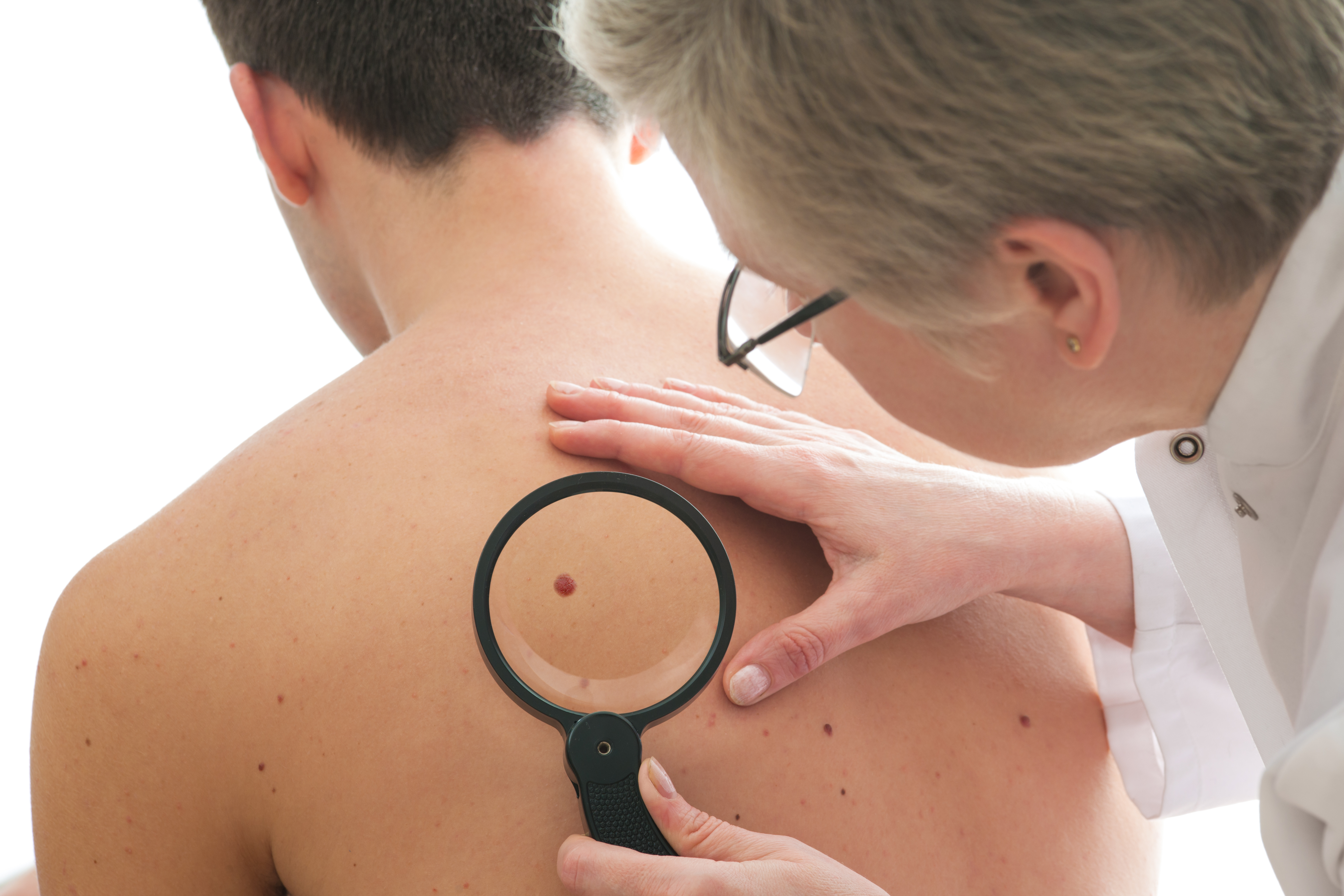There are three major types of skin cancers: basal cell carcinoma (BCC), squamous cell carcinoma (SCC), and melanoma. The first two skin cancers are grouped together as non-melanoma skin cancers. Other unusual types of skin cancer include Merkel cell tumors and dermatofibrosarcoma protruberans.
Here are the basics on skin cancers:
- The vast majority of skin cancers are basal cell carcinomas and squamous cells carcinomas. Both of them are unlikely to spread to other parts of the body.
- A small but significant number of skin cancers are malignant melanomas. It is a highly aggressive cancer that tends to spread to other parts of the body, so it will be fatal if not treated early.
Skin cancer symptoms depend on the type of skin cancer that has developed.
A basal cell carcinoma (BCC) usually looks like a raised, smooth, pearly bump on the sun-exposed skin of the head, neck, or shoulders. Others signs include:
- Small blood vessels may be visible within the tumor.
- A central depression with crusting and bleeding (ulceration) frequently develops.
- A BCC often appears as a sore that does not heal.
A squamous cell carcinoma (SCC) is commonly a well-defined, red, scaling, thickened bump on sun-exposed skin. It may ulcerate and bleed, and left untreated, may develop into a large mass.
The majority of malignant or cancerous melanomas are brown-to-black pigmented lesions. Other signs of a cancerous melanoma include:
- A change in size, shape, color, or elevation of a mole
- The appearance of a new mole during adulthood, or new pain, itching, ulceration, or bleeding of an existing mole
The following easy-to-remember guideline, “ABCDE,” is useful for identifying malignant melanoma:
- Asymmetry — One side of the lesion does not look like the other.
- Border irregularity — Margins may be notched or irregular.
- Color — Melanomas are often a mixture of black, tan, brown, blue, red, or white.
- Diameter — Cancerous lesions can be larger than 6 mm across (about the size of a pencil eraser), although with early detection they will not reach this size.
- Evolution — has a mole changed over time?


